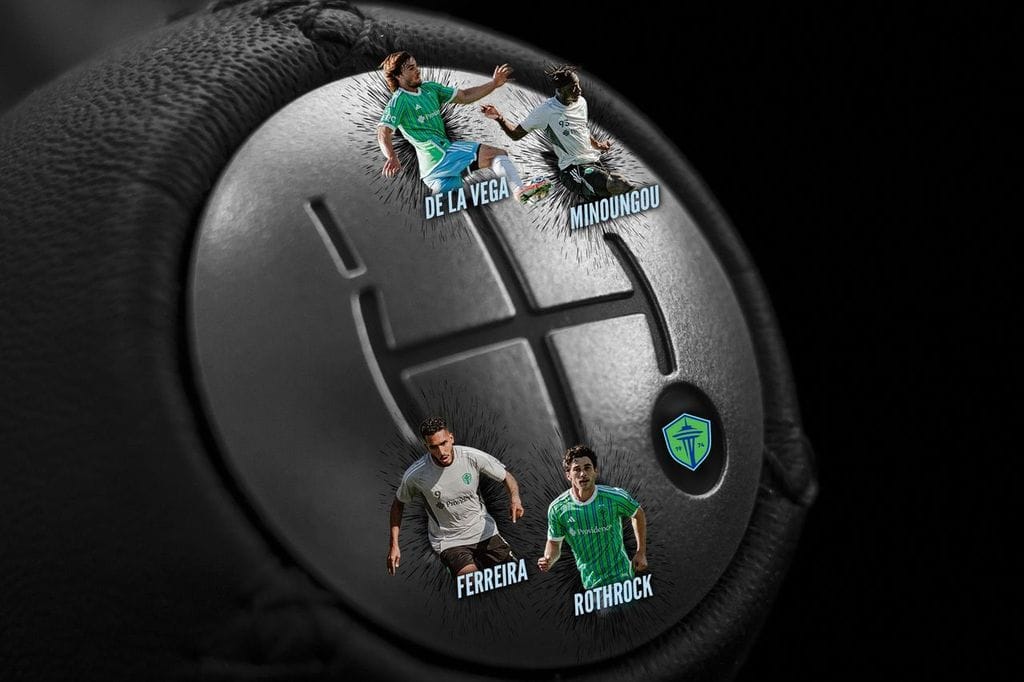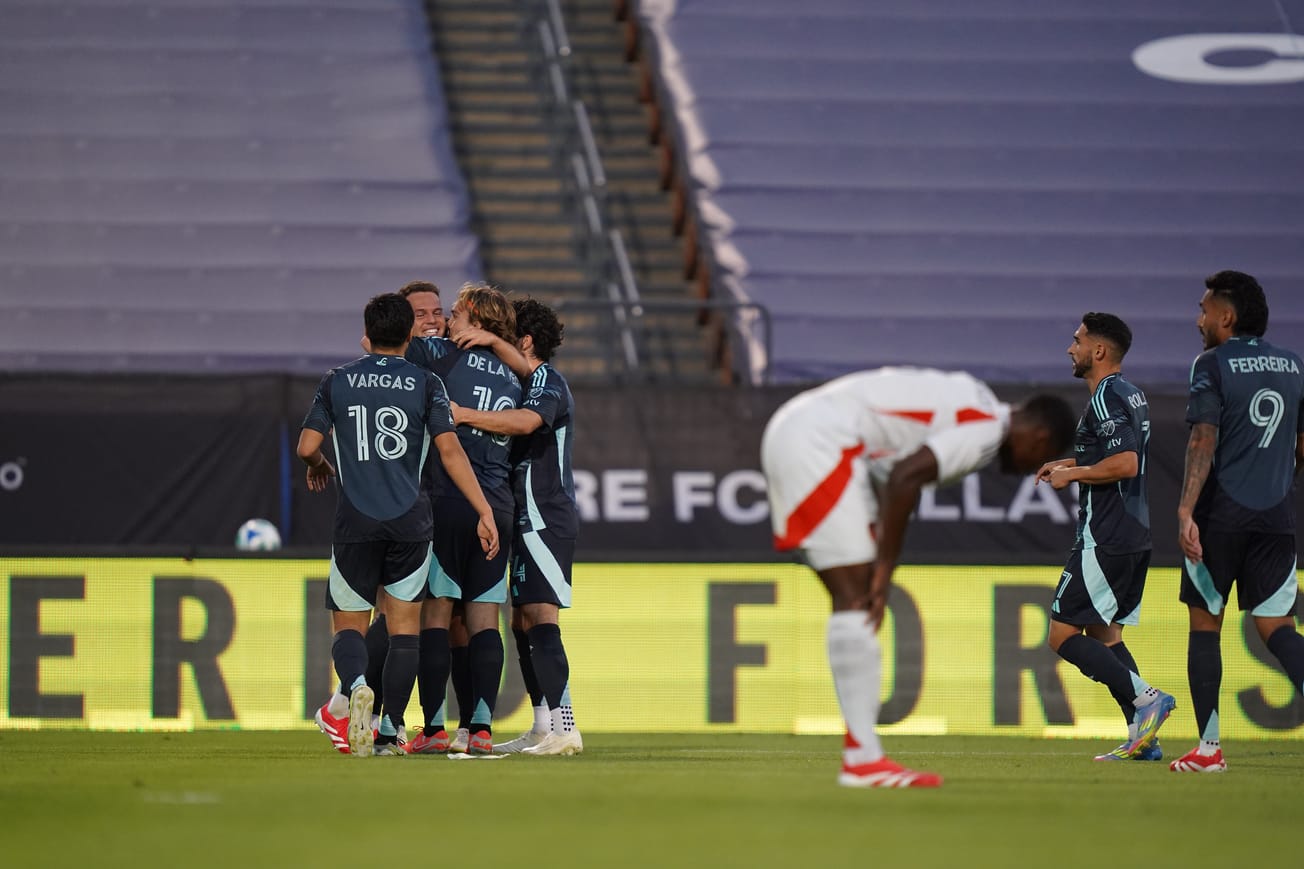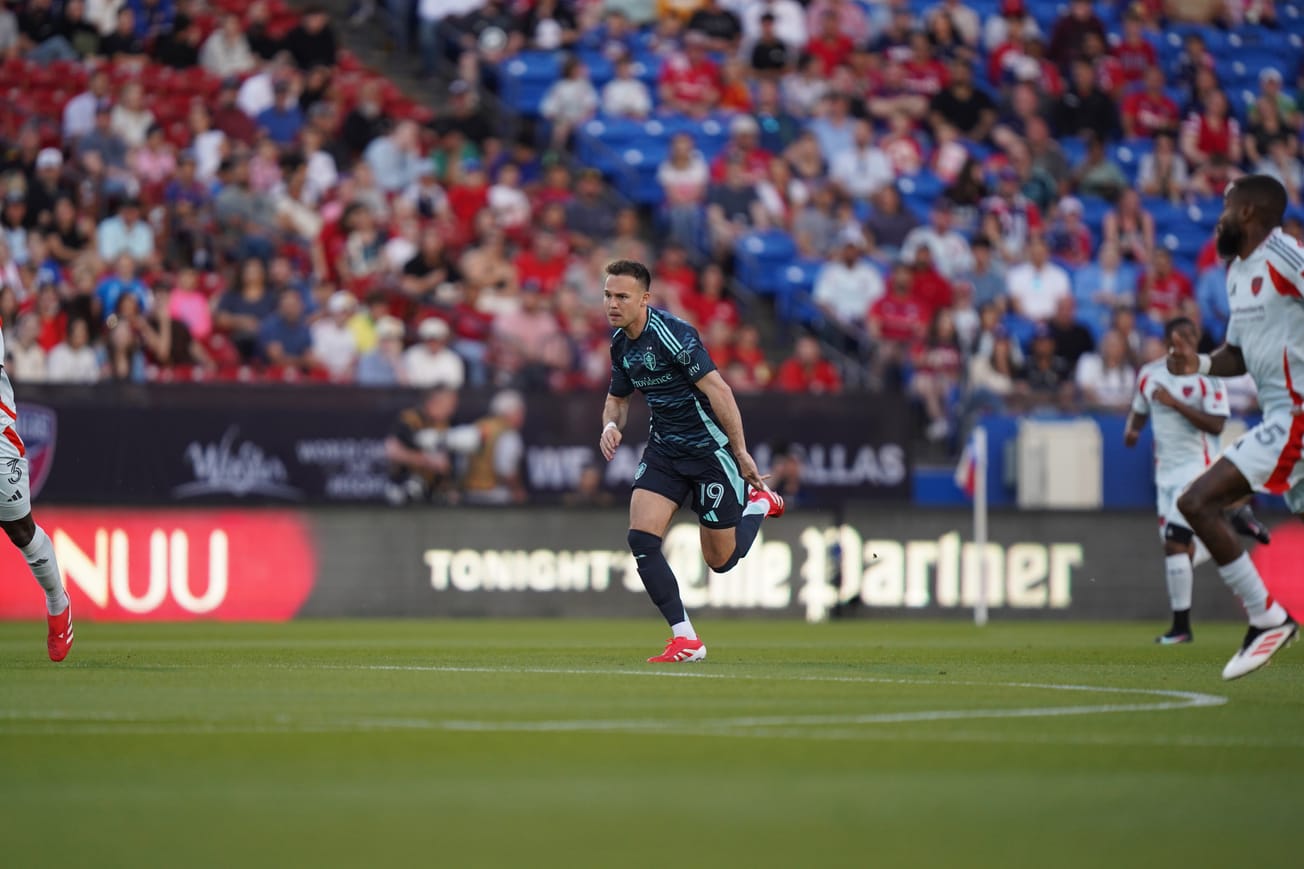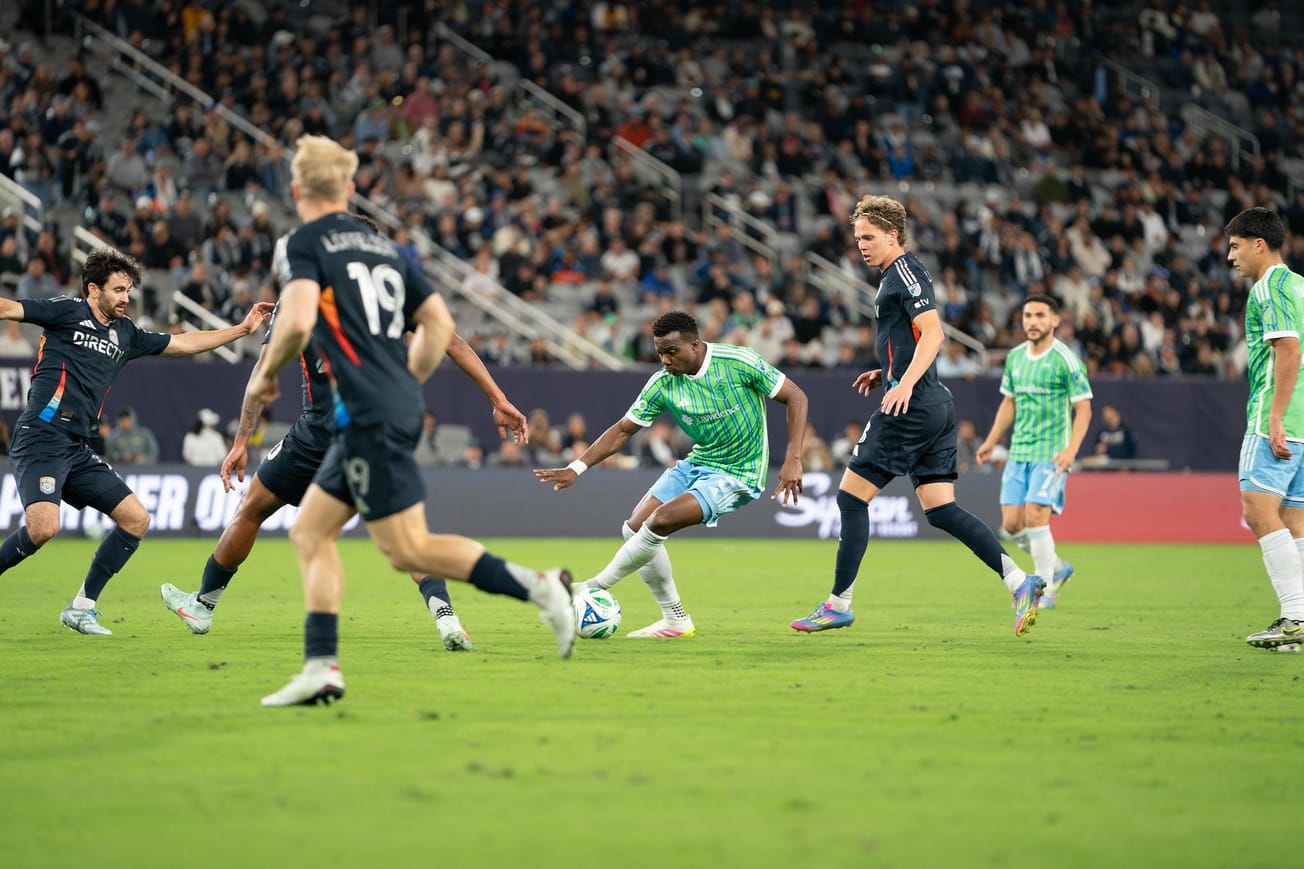The Seattle Sounders’ 2024 season was, not unlike the season before, ended within spitting distance of a trip to MLS Cup by a 1-0 loss against a team from Southern California. Their league-best defense kept them in games, but over the course of the season and in those most crucial moments a collective struggle to create threatening shots and goals proved to be Seattle’s undoing.
The entire Sounders organization seems to have recognized that problem, and have taken steps to put that behind them through a combination of offseason moves and a tweak to the formation and game model.
Seattle’s attack boasted career years for Jordan Morris and Albert Rusnák, along with a legitimate breakout campaign from Paul Rothrock last season. Looking just at the regular season, Morris had 13 goals and 5 assists, Rusnák had 10 goals and 16 assists, and Rothrock has 5 goals and 2 assists. They represented three of the Sounders’ five top contributors in goals+assists (we’re counting secondary assists here, because MLS counts them), with Raúl Ruidíaz putting up 8 goals and 2 assists and Obed Vargas adding 1 goal and 7 assists. The production pretty quickly drops off a cliff after those five players, with Cristian Roldan (1 goal, 5 assists) being the only other player to have 5 or more goal contributions. It’s not dire, but it’s clearly not the kind of attack that is likely to power you to a championship. Although they finished the regular season 4th in the West, the Sounders scored 51 goals – slightly outperforming their xG of 49.3 according to FBRef – which was 9th in the West and 17th in the league overall.
It’s pretty easy to look at the roster from last season and see specific spots that account for that limited attacking output. Ruidíaz may have been the third most productive Sounder during the regular season, and his 10 goal contributions was a jump from a measly 6 the year before, but it represented a downward trend over his final three seasons in Rave Green; Leo Chú followed up a 2023 season where he had 5 goals and 8 assists by managing just 1g, 2a in 2024; most glaringly, though, the big acquisition going into 2024 was Pedro de la Vega, who was hampered by injuries and fitness as he provided just 1g, 1a. There seemed to be a lack of ideas either in the final-third or on the way there, and when ideas did appear the execution was often lacking.
Integrating Rothrock and Georgi Minoungou, who were both more than willing to try to beat players with the ball at their feet, and provided Morris with eager running mates when he got in behind a defense, allowed for some improvement during the back-half of the season – the team averaged 1.5 goals per game for the season, but scored 31 goals in the final 17 games of the season (1.82 goals per game) compared to 20 goals in the first 17 (1.18 goals per game) – but there’s lots of reasons to thing 2025 will be different.
Gone is Ruidíaz, and although he’s not a direct replacement Jesús Ferreira is more or less filling his spot in the squad. Ferreira had something of a down year himself in 2024, putting up 5 goals and 6 assists, but he had 12 goals and 6 assists in 2023 and an eye-popping 18 goals and 6 assists in 2022. He was hampered by injuries at the end of his time in Frisco, but he seems to be at full health and building fitness during preseason. The change of scenery doesn’t seem to have hurt either, as he had 2 goals and 2 assists across about 160 minutes over three games during preseason. His intelligence and ability to read the game allows him to find runs from his teammates to pick out passes, and to make runs himself and take up good positions to finish off plays. The way he plays looks a bit different, but there are elements of Ruidíaz and Fredy Montero in his mix of finishing and playmaking. Where ever he lines up, he’s well poised to get on the scoresheet one way or another.
Pedro de la Vega also looks like he’s ready to leave the struggles of 2024 in the past. Playing with renewed confidence and freedom, the No. 10 put up 4 goals and an assist and was a near constant threat throughout preseason creating chances for himself and others. It’s clear that his chemistry with the guys around him is improved, and that understanding should yield dividends as the season gets rolling. What appeared in flashes during last season has shown up more and more during preseason, as his work rate on both sides of the ball and his desire and willingness to move around the field to get on the ball and start a move can completely unsettle opponents, disrupt their shape and create space for teammates like Jordan Morris to make runs into that de la Vega absolutely has the ability to find with a pass that breaks lines or goes over a defense. Preseason is just that, it’s preseason, and things can certainly change once the games mean something, but compared to the way that physical and mental struggles seemed to hinder PdlV last year seeing him play with confidence game after game regardless of the circumstances is cause for optimism.
Rothrock’s explosion onto the MLS scene last season came almost entirely during the second half of the season, making his first of 13 regular season starts on June 19 against Houston. The offseason additions of Ferreira and Paul Arriola might mean that Rothrock starts fewer regular season games, but he’ll almost certainly play more minutes (1,317 regular season minutes) across more games (25 regular season appearances). Whether he’s starting or coming off the bench he can be relied on to make the most of his opportunities.
Similarly, Georgi Minoungou seems ready to take another step based on his preseason performances. A goal and an assist in 366 regular season minutes was an enticing preview from the 22-year-old, but increased familiarity with his teammates and more time to adjust to the speed of the game at this level should provide him with a real chance to contribute.
More than just improvements from some players and new additions to the team, the way everyone fits together should help improve the team’s attack. Those aspects of the team are certainly a factor, but thinking back to the struggles of last year it’s easy to see how individual improvements also create a rising tide that will lift everyone. There were so many times where Morris was played into space or in behind a defense, but because he didn’t have runners in support he was left without options and either had to hold the ball up and wait for the chance to evaporate before he had someone to pass to, or try to go to goal himself with no one to pick up a potential rebound.
We saw players with the ball often settling for a backwards pass to recycle possession rather than driving at a defender or utilizing a teammate to break down the defense with a pass. The players they’ve added are all willing to be a resource to their teammates in those situations, meaning that when a ball is played into space or behind for someone it’s more likely to be a 2v1 or 2v2 rather than the other way around; the team is full of players who are not only capable of, but want to combine at the edge of the box to create a dangerous look at goal for themselves or someone else. There are more players who have ideas on the field and want to try them.
The shift in the team’s formation and approach feed into this hopefully virtuous cycle. The team is being more aggressive when it comes to making runs into the box from deeper areas, allowing the midfield to make late runs to finish off plays. That kind of play has previously allowed Cristian Roldan to reliable contributor on the score sheet from Seattle’s double-pivot, and it should allow Vargas to improve on his numbers from last year. It will mean more targets when players look for a final pass from the edge of the box. To go along with that, it seems that the team will continue to press and counter-press in order to win the ball and start attacking movements closer to the opponent’s goal. That should allow the team’s creative and attacking players a bit more liberty to take risks in the final third, because even if it doesn’t work the players around them will be there to keep those mistakes from turning into goals.
All together it’s easy to imagine a Sounders attack that is much more difficult to contain than in recent years. There shouldn't be a single player that teams can simply ignore, and the more attention defenses pay to any individual the more room there is for another to hurt them.
Maybe Morris or Rusnák take a step back. But it seems even more likely that their performances are lifted by the increase in support. Even if they do regress there are a number of players ready to pick up the slack and then some. This team might not have a single 30+ goal contribution player, but it could easily have multiple players in the 15-20+ goal contributions range. It remains to be seen how this all actually pans out, but there’s a lot to be excited about when this Sounders team gets on the ball in 2025.










